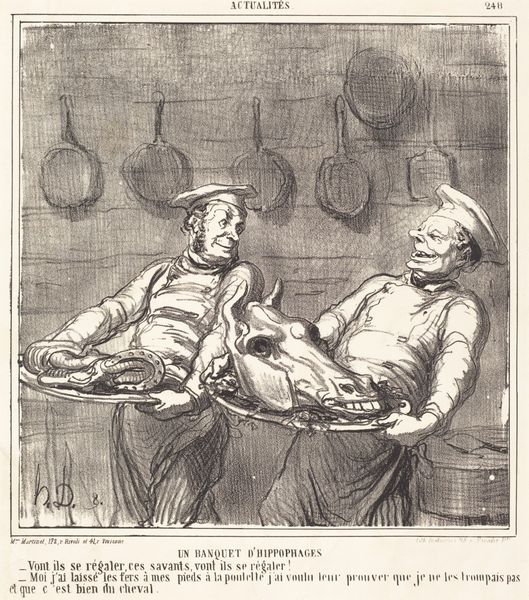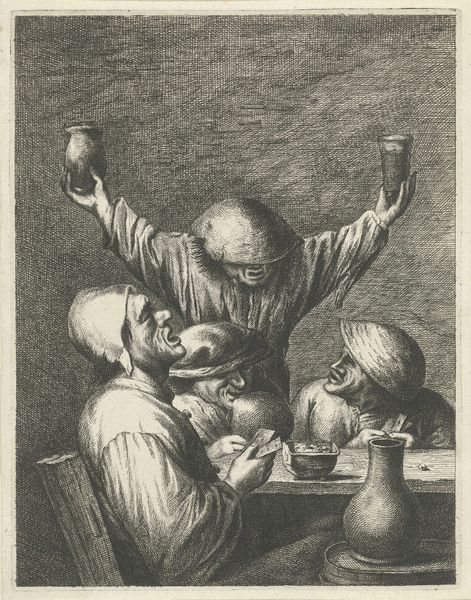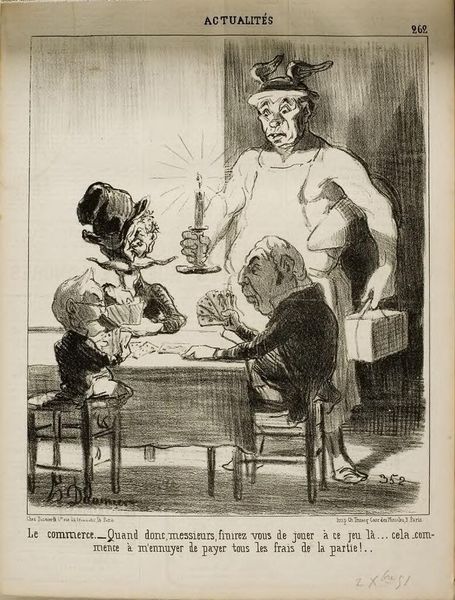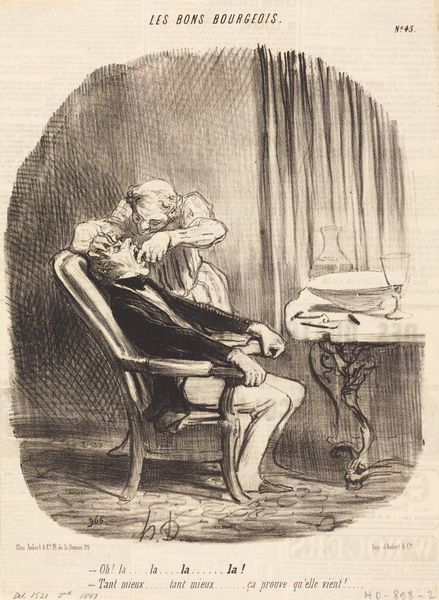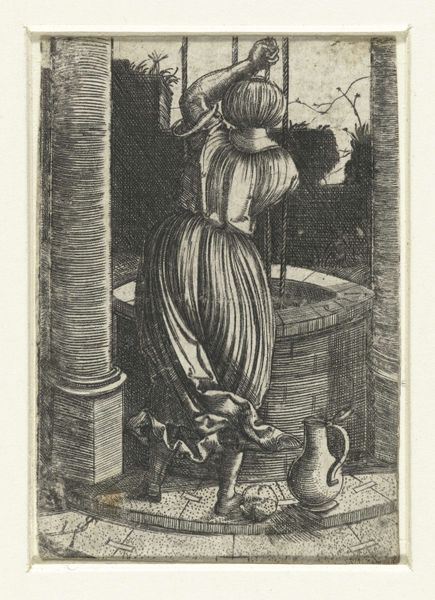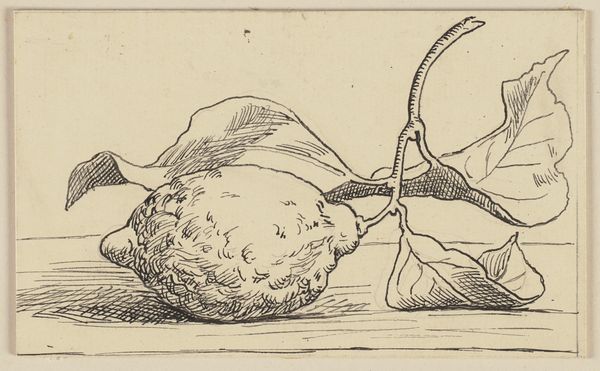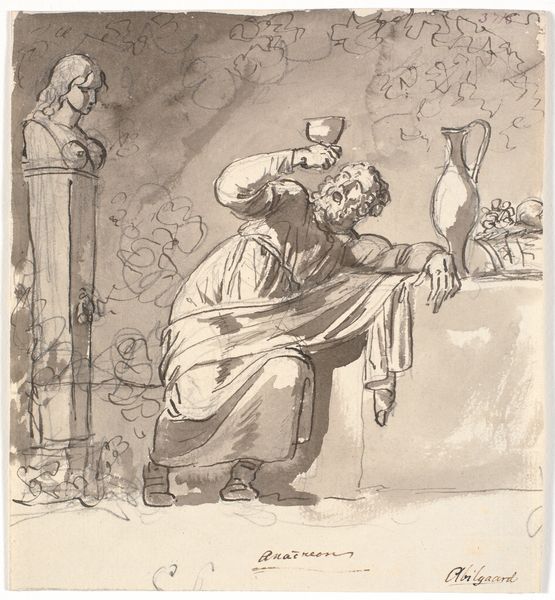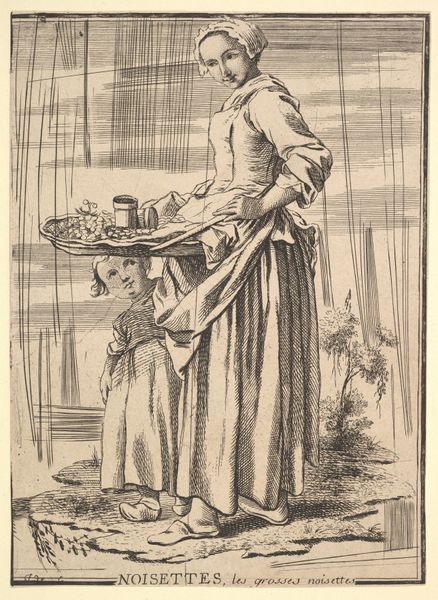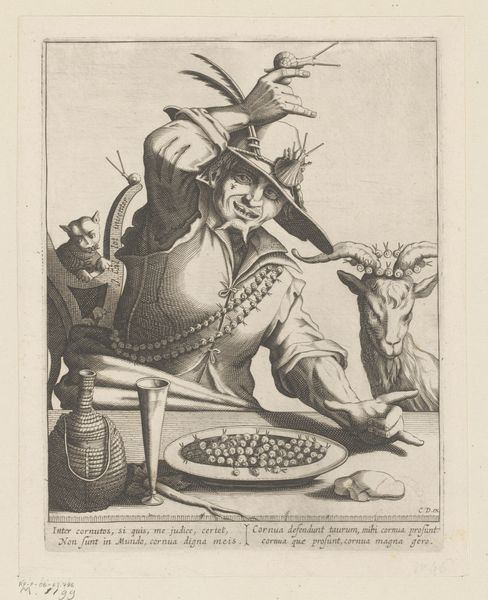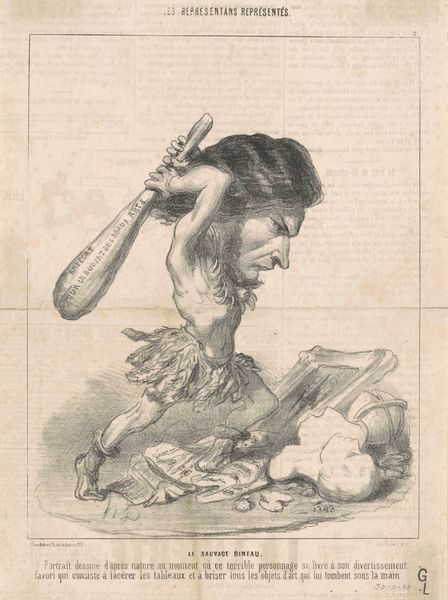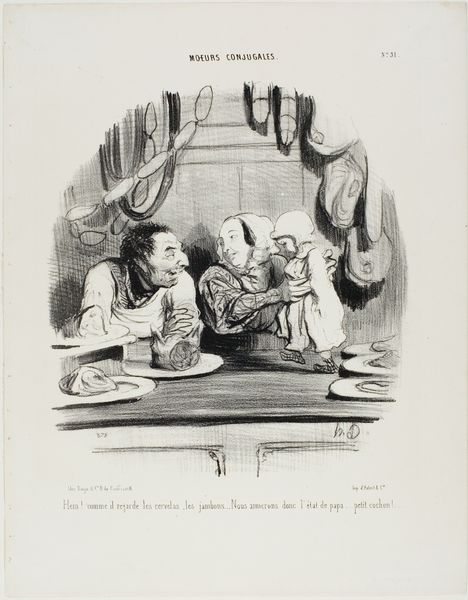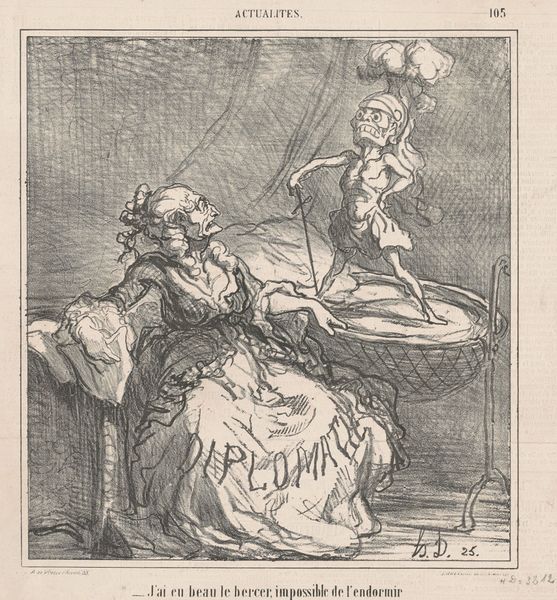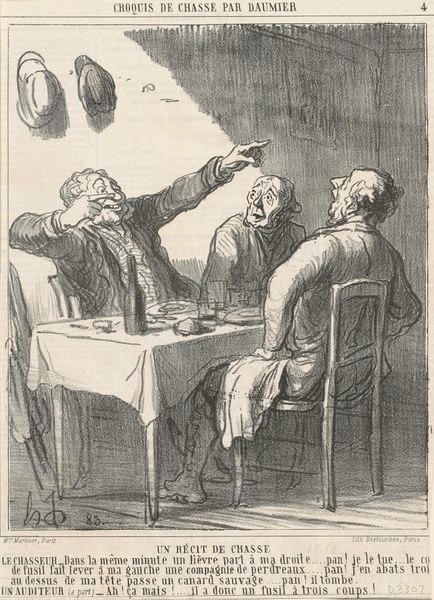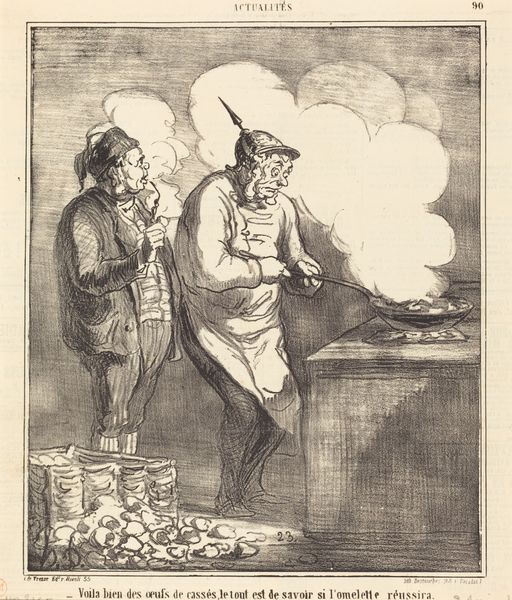
Copyright: National Gallery of Art: CC0 1.0
Curator: Welcome. We're looking at Honoré Daumier's lithograph "Mars sans Carême," created in 1869. It's a powerful statement about wealth and excess. Editor: My first impression is of overwhelming indulgence, even grotesqueness. The exaggerated figure leans back, practically drowning in the bounty on that table. Curator: Exactly. Daumier uses caricature to critique the opulence of the Second Empire. The title itself, "March without Lent," suggests a deliberate rejection of restraint and piety, which is in tune with Marxist ideologies of the era that criticize socio-economic structures. Editor: Visually, I'm drawn to the dynamic lines. Daumier’s use of hatching and cross-hatching creates volume and depth, especially in the figure’s body, that's oddly compelling. The chiaroscuro is strategically applied. Curator: The print appeared in "Le Charivari," a satirical magazine. Consider its original audience: the burgeoning middle class in Paris, grappling with issues of wealth disparity and social mobility. Editor: The coins dropping into the figure's mouth…It’s a blatant symbol of unchecked greed. Is it specifically about capitalism and its insatiable appetite? I mean, the bag behind the character shows the number '20000' in it, implying huge wealth. Curator: In part, yes. Daumier also points to the broader political corruption endemic to the period. The lack of traditional religious observance – “Lent” normally being a solemn period of abstinence - also points to broader corruption. Editor: The composition is deliberately unbalanced. The figure dominates the left side, weighed down by extravagance, while the objects – wine, fruit, pastries – are rigidly placed, almost like props. The rigid formality underlines the central absurdity of consumption as well. Curator: The "bourgeois" subject matter reflects the societal shifts after the Industrial Revolution, the way new money corrupts social morals. Also, it reflects an increasingly secular society. Editor: So, it's more than just a portrait; it's a social commentary loaded with symbolism. I appreciate how Daumier uses visual language to critique the ethical decay associated with material wealth. Curator: Precisely. Daumier challenges viewers to confront uncomfortable truths about our social fabric, even today. Editor: It's an engaging lesson about using visual rhetoric. What seemed like mere lines convey a narrative layered with sharp observations.
Comments
No comments
Be the first to comment and join the conversation on the ultimate creative platform.
